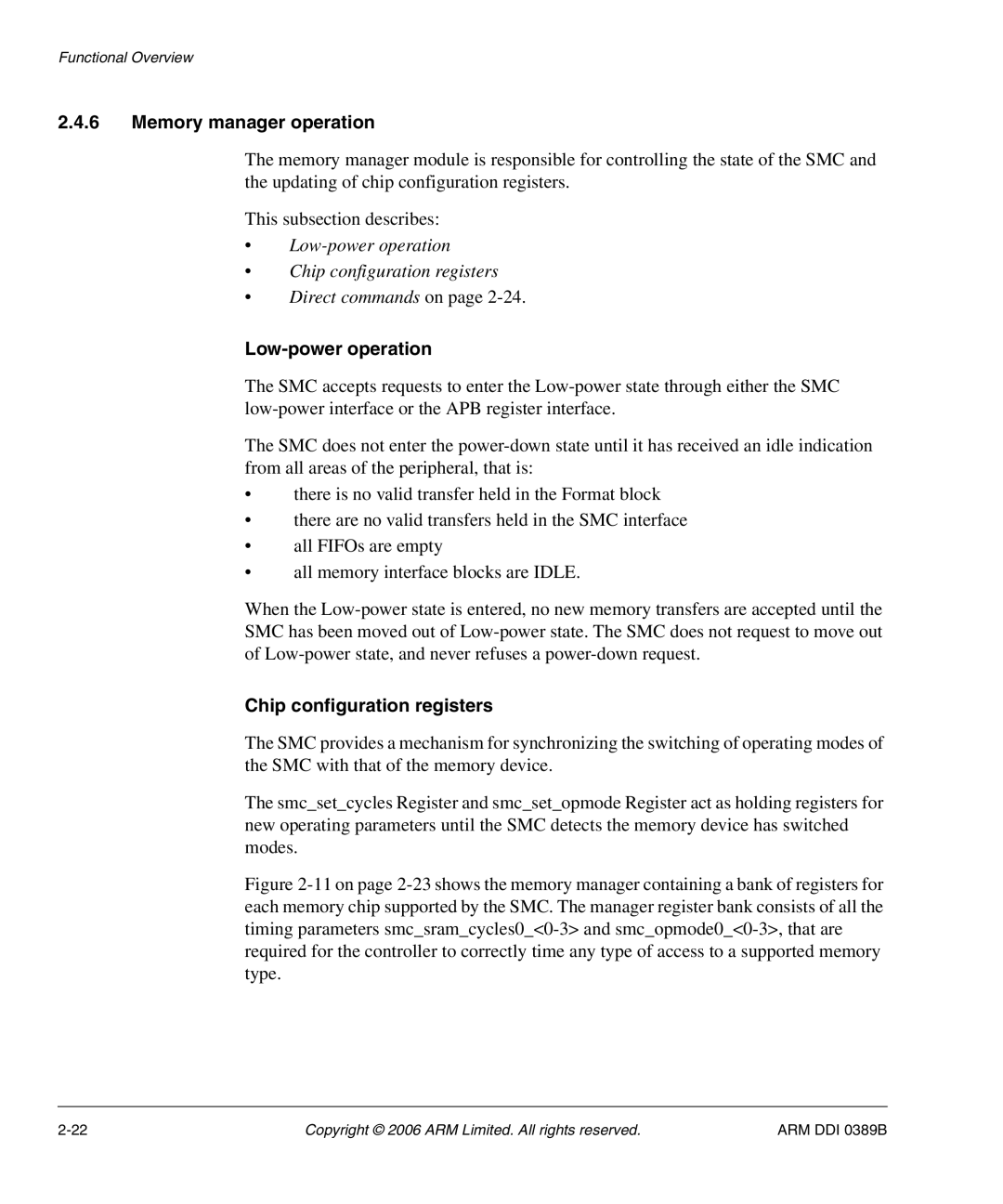Functional Overview
2.4.6Memory manager operation
The memory manager module is responsible for controlling the state of the SMC and the updating of chip configuration registers.
This subsection describes:
•
•Chip configuration registers
•Direct commands on page
Low-power operation
The SMC accepts requests to enter the
The SMC does not enter the
•there is no valid transfer held in the Format block
•there are no valid transfers held in the SMC interface
•all FIFOs are empty
•all memory interface blocks are IDLE.
When the
Chip configuration registers
The SMC provides a mechanism for synchronizing the switching of operating modes of the SMC with that of the memory device.
The smc_set_cycles Register and smc_set_opmode Register act as holding registers for new operating parameters until the SMC detects the memory device has switched modes.
Figure 2-11 on page 2-23 shows the memory manager containing a bank of registers for each memory chip supported by the SMC. The manager register bank consists of all the timing parameters smc_sram_cycles0_<0-3> and smc_opmode0_<0-3>, that are required for the controller to correctly time any type of access to a supported memory type.
Copyright © 2006 ARM Limited. All rights reserved. | ARM DDI 0389B |
